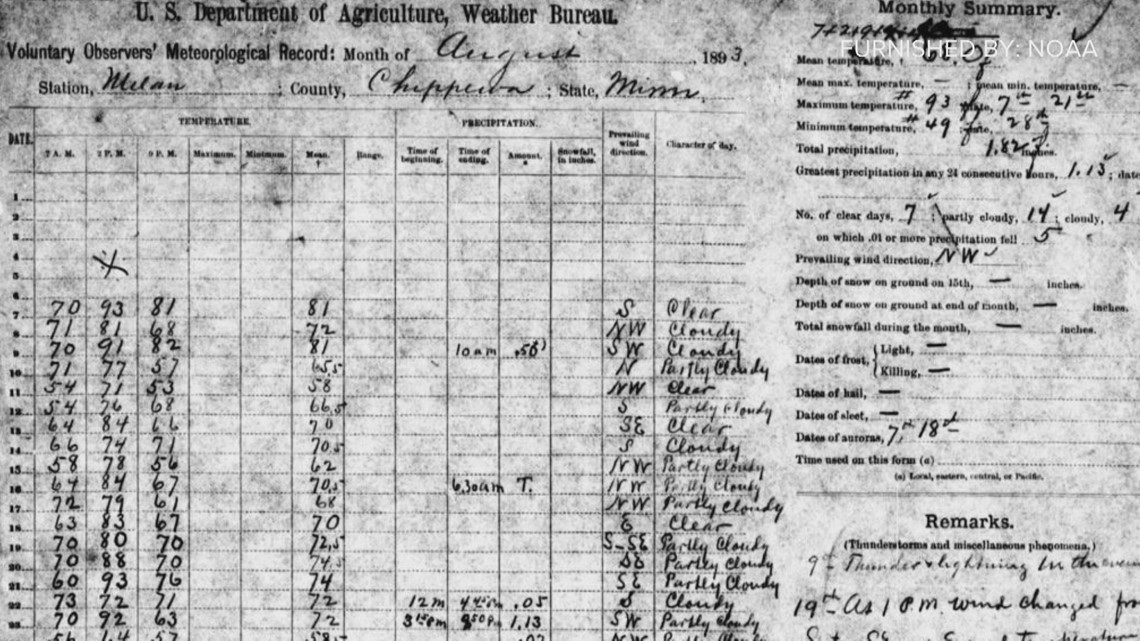MILAN, Minn. — At 6 p.m. every day, Luther Opjorden walks out his back door and toward a small, white structure in his backyard. It's a weather station, with equipment provided by the National Weather Service (NWS). And for 129 years, someone in the Opjorden family has been making the short walk to the station to record daily weather readings to submit to the NWS.
"You don't even think about it anymore. You just do it. It becomes a habit like everything else," Opjorden said.
Luther's grandfather, O.K. Opjorden, started the family tradition in 1893, when the NWS was looking for volunteers for its weather observing network.
"He thought it was a pretty good idea," Luther said.
Luther still has a copy of his grandfather's first weather report, dated August 1893.
"[It's] the oldest record in the family," he said.


Luther's dad, Torfinn Opjorden, took on weather recording duties for decades more, every day recording Milan's temperature, precipitation, and other weather factors from the station in the family's backyard.
The National Weather Service says since 1893, the Opjorden family has submitted more than 46,000 observations, the longest continuous volunteer recordings of anyone in Minnesota.
"That's what we'd consider the gold standard," said Michelle Margraf, the NWS Observing Program Leader in Minnesota.
There are now 192 weather stations with volunteers taking readings across the state, and about 8,700 across the country.
However, Margraf says the readings from the Opjorden family's station are invaluable, not just because of its long history, but also because of its location.
Milan is a small town in rural western Minnesota, about 40 miles west of Willmar.
"Nothing has really changed around the farm. It's kind of been a stable place to measure the climate," Margraf said.
Changes in temperature or precipitation trends in rural parts of the state are useful as researchers track climate change, because it shows warming temperatures in Minnesota aren't just the result of an urban "heat island."
"We are seeing that overall pattern of warmness when we compare the urban and the rural," Margraf said. "It tells us that it's not just an urban effect. It's more of a general warming than just a city warming."
The Opjorden's service has landed the family more than a dozen awards, including one Luther accepted in 1991 from then-second lady Marilyn Quayle to mark the station's 100th year.
"It's just a tradition to keep it going," he said.
The National Weather Service is looking for more volunteers for a program which tracks snow and rainfall across Minnesota. They are especially interested in volunteers who live in greater Minnesota. If you're interested, you can find more information here.

